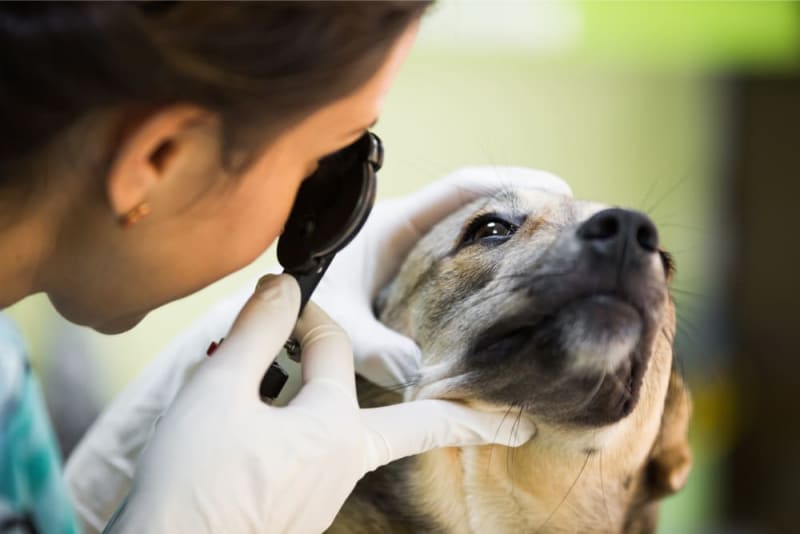Can You Give a Dog Tylenol for Pain
If your dog is limping, whimpering, or just not themselves, it’s normal to want to turn to something you’re familiar with – Tylenol- to help with their pain. However, you may be asking yourself, Can you give a dog Tylenol for pain? The answer is: Only if a veterinarian casts you to do so; otherwise, no.
Tylenol (acetaminophen) is a very common human pain reliever, but dogs metabolize medications very differently from humans do. In fact, just one miscalculated dose could potentially lead to liver failure, potentially life-threatening reactions, and dangerous changes to red blood cells. In fact, cats should not be given acetaminophen at all due to their very high risk of toxicity.
Why is Tylenol Risky for Dogs?
While dogs and humans may share many things, drug metabolism is not one of them. Acetaminophen has an extremely narrow therapeutic index in dogs, meaning the difference between a therapeutic dose and a toxic dose is small. Additionally, factors such as weight, age, breed, or the presence of pre-existing liver disease can change how a dog responds to acetaminophen.
In studies, toxicity has been seen in dogs from acetaminophen doses close to 100 mg/kg, but negative effects have been seen at even lower doses. This is particularly true if the dog is small or sensitive, or if doses are repeated. Due to this uncertain nature, the advice of vets is that Tylenol should absolutely not be given at home.
Although acetaminophen is sometimes used in a limited and controlled manner by vets, it is considered “extra-label” and is only done when dosing can be calculated, liver enzymes checked, and it can be combined safely with other drugs.
Signs of Tylenol Poisoning in Dogs
Are the symptoms of the dog that has a Tylenol intentionally ingested, developing quickly? Warning signs include:
- Vomiting
- Lethargy or depression
- Rapid or difficult breathing
- Dark or bluish gums (because of methemoglobinemia)
- Jaundice (yellowing of eyes/gums)
- Swelling of the face or a paw
- Fall or collapse
Those signs show the damage to the liver and blood, the most vital organs, thus very serious. Taking the dog to the vet immediately is very important. In case of an ingestion suspicion, do not hesitate to call the vet or the poison control helpline.
The Latest Insights
Present research and updates in veterinary medicine reveal that there is a greater focus on safe, multimodal pain management, which means the use of specifically designed medications and therapies for dogs instead of human drugs.
What’s new:
- 2022 AAHA Pain Management Guidelines (still widely referenced in 2024-2025) support the creation of individualized, species-appropriate pain treatment plans. These guidelines very strongly warn against the administration of human pain meds by the owner.
- Veterinary pharmacology research in 2024-2025 is deeply involved in finding out if acetaminophen may be a viable option in tightly monitored clinical cases. These results do not alter the recommendation for pet owners: Tylenol should never be administered to a pet without a vet’s supervision.
- Data from poison control continues to indicate that human medications (including Tylenol) are the leading causes of pet poisonings that occur every year, thus prompting an increase in the warnings issued to pet parents.
Safe Alternatives for Managing Dog Pain
When a dog is in pain, there are a lot safer and better options to use than Tylenol, such as:
Veterinary-prescribed NSAIDs
These are made specifically for dogs to relieve their pain and calm down inflammation. They don’t contain human drugs like ibuprofen or naproxen, which are very harmful to dogs.
Other vet-approved medications
The vet, depending on the type of pain, may use one of the following medications:
- Gabapentin
- Tramadol
- Opioid medications
- Joint supplements
- Steroids
- Laser therapy or physical rehabilitation
Proper diagnosis first
It is necessary to find out the reason why the dog is having pain – arthritis, injury, infection, dental disease, etc. Healing the cause is always better than just hiding the pain.
What To Do if Your Dog Ate Tylenol
Time is very important. If your dog ate Tylenol, do not wait for symptoms to show; take him to the vet immediately or contact poison control. The options for treatment – like making the dog vomit, administering activated charcoal, or giving the antidote N-acetylcysteine – are most effective when they are done early.
Conclusion
Although Tylenol may be helpful for humans, it is definitely not a safe home remedy for dogs. Just a slight mistake in dosing can be harmful; hence, only a vet should decide if acetaminophen is suitable. If your dog is hurting, see your vet – they are the ones who can give safe and effective treatment without putting your dog in danger.
FAQs About Tylenol for Dog Pain
Is it okay to give a dog Tylenol?
Theoretically, yes, but only under a veterinarian’s strict supervision and directive in rare cases. Never do it yourself.
Is acetaminophen safer than ibuprofen for dogs?
The answer is no. Both can lead to very dangerous situations. Ibuprofen and naproxen are highly toxic compared to Tylenol, and thus, no one should administer them unless given the green light by a vet.
What are safe pain relief options for dogs?
What is safe for dogs is a certain drug regimen including NSAIDs prescribed by the vet, gabapentin, focus therapy for pain, and a selection of other drugs that require a prescription. Do not use human meds unless a vet tells you to.
What symptoms show that Tylenol is harming my dog?
Symptoms such as vomiting, difficulty breathing, swelling, brown/blue gums, jaundice, lethargy, and collapse call for immediate veterinary attention.
How much Tylenol is toxic to dogs?
Toxicity is possible at approximately 100 mg/kg; however, a few instances in whereby there were harmful effects have been reported in much lower doses. That is the reason why anyone doing the dosing at home risks doing it improperly.









